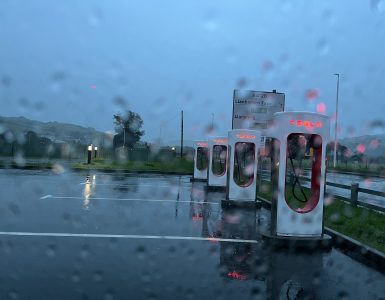Global warming, new technology & new knowledge on the effects of air pollution are set to send fossil fuel diesel trains into the sidings
CO2 from diesel fuel
Replacing dirty diesel trains with emission free travel is vital to achieve climate change goals by cutting CO2 emissions and the use of fossil fuels on the railways. Using electricity produced from renewable sources like offshore wind will cut the carbon impact of rail travel, eventually enabling zero carbon operation.
Diesels outdoor air pollution around railways and in stations
Diesel also has a major impact on air pollution. Diesel trains do not have the same requirements to use particulate filters or adblue SCR systems. This affects people near railways and in stations especially covered terminus stations like London Paddington which combines idling diesel trains with a still largely diesel cab rank all under a covered roof.
Diesel trains produce dangerous levels of toxic pollution inside passenger trains
A new UK backed Government study has looked at levels of nitrogen dioxide and particulate in diesel passenger train carriages. The Sept 2021 study commissioned by the DFT was conducted by the Rail Safety and Standards Board (RSSB) revealed that
- some trains had NO2 levels 13 times worse than one of London’s most polluted roads
- Pollution levels vary by train but new diesel trains were as bad as old trains indeed the worst pollution was recorded in 2 year old Hitachi bi-Mode trains on the Great Western route between London and Bristol. In the ultimate irony these are electric trains that were fitted with diesel engines to power them in cities like Bath and Bristol – a particularly daft use of £5.7B
- Particularly high levels of NO2 and particulate were recorded in stations and tunnels
- The RSSB said the pollution does not exceed UK legal pollution limits on a train despite being 13x times higher than the levels on Marylebone road ( which exceeds legal limits for a city)
Why are diesel train carriages so full of exhaust fumes?
Most diesel passenger trains put the locomotive or engine at the front of the train, or both front and back or in the middle. The diesel exhausts are on the roof. The passenger cars aircon systems suck air from the roof and pump it round the carriages.
Even diesel cars have their exhaust at the back of the car. With trains the usual arrangements means each a train is effectively pumping a portion of the diesel exhaust into its own passenger carriages. The 2021 RSSB UK study found the worst pollution levels in the rear carriages and lower levels near the engine. This probably means the diesel exhaust fumes are pushed up and out of the engine therefore missing the front carriages but the fumes then dissipate and get sucked in to the aircon of the rear carriages.
A few trains run with the diesel locomotive at the back of the train pushing. This unusual configuration reduces pollution in the passenger cars massively.
Legal pollution limits on UK diesel passenger trains
If there are any legal limits for exposing train passengers and staff to air pollution, the limits must be extraordinarily high. Perhaps they were set when during the steam age when there was no equipment to measure pollutants like NO2 (Nitrogen Dioxide), and Particulate matter (large PM 10) and smaller but even worse for health PM 2.5.
This becomes clear when the you compare the WHO limits for air pollution in cities
- NOx 25 μg/m3 24-hour mean
- Fine particulate matter (PM2.5) 15 μg/m3 24-hour mean
- Coarse particulate matter (PM10) 45 μg/m3 24-hour mean
with the levels on the worst trains that were within UK pollution limits of
- NO2 levels of 208 Micrograms per cubic metre on the new Hitachi Diesel bi mode trains between London and Bristol
- PM 2.5 levels of 31.5 Micrograms per cubic metre Euston to Birmingham New Street (Avanti West Coast)
- PM10 of 52.3 Micrograms per cubic metre on the Euston to Birmingham New Street (Avanti West Coast)
Looking at the 76 page document from ATOC detailing the requirements for all UK rolling stock the sole requirement is this line
3.1.3 On diesel multiple units the HVAC fresh air intake shall have a good separation from exhausts.
It appears the UK requirements specify train carriages have air intakes set a “good distance” from the train exhaust but ignore the rather obvious fact on a moving train the cloud of fumes is carried across the roof of every carriage behind it. In fact as the RSSB discovered the fumes partly skip the front carriages causing the highest pollution in carriages further from the engine. The problem isn’t distance it that the air intakes are in a direct line from the exhaust. If they are on the side of the carriages for example the pollution would likely be reduced massively.

The future without diesel?
The link below runs through the main contenders






